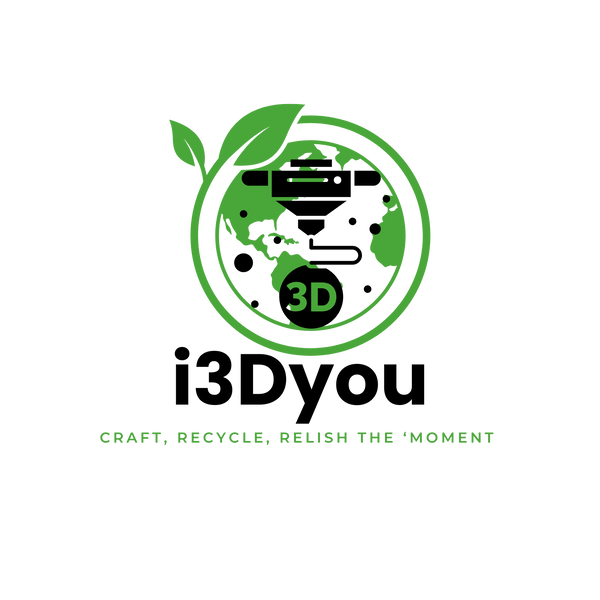
5 Things You Can 3D Print at Home — But Probably Shouldn't
Share
5 Things You Can 3D Print at Home — But Probably Shouldn't
In the ever-evolving world of 3D printing, the possibilities are endless. From practical household items to intricate cosplay accessories, the capabilities of this technology continue to amaze us. However, with great power comes great responsibility, and there are certain things that, while technically possible to 3D print at home, should probably be left to the professionals.
In this blog post, we'll explore five such items that you can 3D print at home, but you might want to think twice before doing so. At i3dyou, we're passionate about empowering our customers with the latest 3D printing innovations, but we also believe in promoting responsible and informed use of this technology.
1. Firearms and Weapon Components
One of the most controversial and potentially dangerous applications of 3D printing is the ability to create firearms and weapon components. While the legality and ethics of this practice are heavily debated, the fact remains that it is possible to 3D print various gun parts, including the receiver, trigger, and even the entire weapon.
However, we strongly advise against attempting this at home. Not only is it often illegal in many jurisdictions, but the risks involved are simply too high. Improperly made 3D-printed firearms can be unreliable, unstable, and potentially dangerous to the user and those around them. Additionally, the distribution of 3D-printed weapon files can have serious consequences, as it can enable the proliferation of untraceable and unregulated firearms.
2. Medical Devices and Prosthetics
3D printing has revolutionized the medical field, with the ability to create customized prosthetics, implants, and other medical devices. While this is an incredible advancement, it's important to note that the production of these items should be left to trained professionals and medical experts.
Attempting to 3D print medical devices at home can be extremely risky. These items require precise measurements, specialized materials, and rigorous testing to ensure safety and functionality. Improperly made medical devices can cause serious harm or even be life-threatening to the user. It's crucial to leave the design and production of these critical items to the experts.
3. Food-Grade Containers and Utensils
3D printing has also made its way into the kitchen, with the ability to create custom-designed food containers, utensils, and even edible items. While this may seem like a fun and creative endeavor, it's important to exercise caution when it comes to 3D printing anything that will come into direct contact with food.
Many 3D printing materials, such as certain plastics and resins, are not food-safe and can potentially leach harmful chemicals into the food. Additionally, the printing process itself may introduce contaminants or bacteria that can make the final product unsafe for consumption. It's best to stick to commercially produced food-grade items or seek the guidance of a professional when 3D printing anything intended for food use.
4. Toys and Children's Products
The accessibility of 3D printing has made it possible for individuals to create their own toys and children's products at home. While this can be a fun and creative activity, it's crucial to consider the safety and quality of these items before allowing children to use them.
Poorly designed or constructed 3D-printed toys can pose a choking hazard, contain small parts that can detach, or even break in a way that could cause injury. Additionally, the materials used in 3D printing may not meet the same safety standards as commercially produced toys. It's essential to thoroughly research and test any 3D-printed toys or children's products before allowing a child to play with them.
5. Electrical and Electronic Components
The versatility of 3D printing has also extended to the realm of electronics, with the ability to create custom-designed cases, enclosures, and even some electronic components. However, when it comes to anything involving electricity or electronics, it's crucial to exercise extreme caution.
Improperly designed or constructed 3D-printed electrical components can pose a serious fire or shock hazard. Additionally, the materials used in 3D printing may not be suitable for conducting electricity or withstanding the heat and stress of electronic devices. It's best to leave the design and production of electrical and electronic components to trained professionals or to use commercially available, safety-tested parts.
In conclusion, while the world of 3D printing is vast and exciting, there are certain items that should be approached with caution and responsibility. At i3dyou, we encourage our customers to explore the incredible possibilities of this technology, but we also believe in promoting safe and ethical practices.
Remember, just because you can 3D print something at home doesn't always mean you should. When it comes to items that could potentially put your safety or the safety of others at risk, it's best to err on the side of caution and leave the production to the professionals. Happy and responsible 3D printing!



